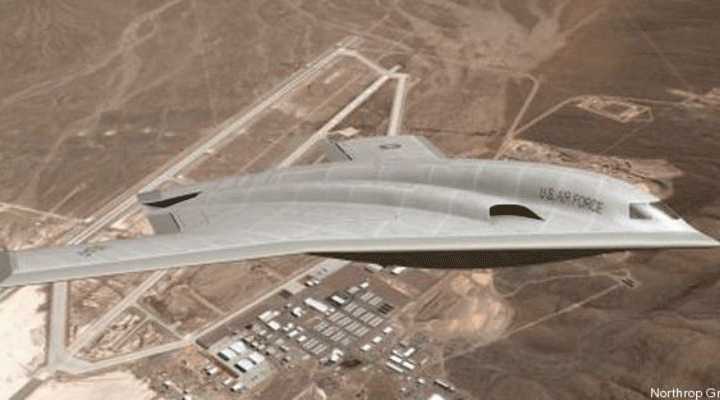Get rewarded! We want to reward you for stopping by. Check out our new 100% mobile-friendly site via phone or tablet and enter to win a $100 Amazon gift card! (Just visit the site from your phone or tablet to learn more!)
The U.S. Air Force says it is months away from making key decisions about two major aviation programs: a new bomber and a new ground-surveillance jet.
The Air Force, which formally launched the bomber competition a year ago by sending a request for proposals (RFP) to industry, is now “one to two to three months away” from selecting a winning design, Air Force acquisition chief William LaPlante said July 9. “It is fair to say that we’re in the closing parts of it.”
But LaPlante, who spoke at the Center for Strategic and International Studies (CSIS) in Washington, D.C., cautioned that getting the decision right is more important than meeting a specific timetable. “It’s going to be done when it’s done,” he said. “If someone comes to me and [asks] to do one more thing, I’m not going to say no. It’s something that is going to be with us for 50 years.”
Vying for the Long Range Strike-Bomber
A Boeing-Lockheed Martin team and Northrop Grumman are vying to be the prime contractor for the Long Range Strike-Bomber (LRS-B) in what has been a mostly secretive competition. The Air Force plans to buy 80 to 100 aircraft and begin fielding them in the mid-2020s to replace its aging bomber fleet.
The Air Force has called the nuclear-capable, optionally manned bomber one of its top three modernization priorities, along with the F-35 Joint Strike Fighter and KC-46A tanker. The F-35 and KC-46A already have prime contractors: Lockheed Martin and Boeing, respectively.
LaPlante also said that Pentagon officials will meet in late August or early September to decide whether to take a significant step toward replacing its aging fleet of E-8C Joint Surveillance Target Attack Radar System (Joint STARS or JSTARS) aircraft. The Air Force wants to award risk reduction contracts to up to three industry teams. Those contracts could pave the way for a full-fledged development effort.
In June, Lockheed Martin, Raytheon and Bombardier announced that they would form one JSTARS team, while Northrop Grumman, General Dynamics/Gulfstream and L-3 said they would create another. Both teams plan to offer modified business jets. Boeing is expected to offer a derivative of its 737 airliner.
LaPlante briefly mentioned a third aviation modernization effort, the replacement of the aging T-38 trainer jet, but said the release of an RFP for that competition is about two years away.



